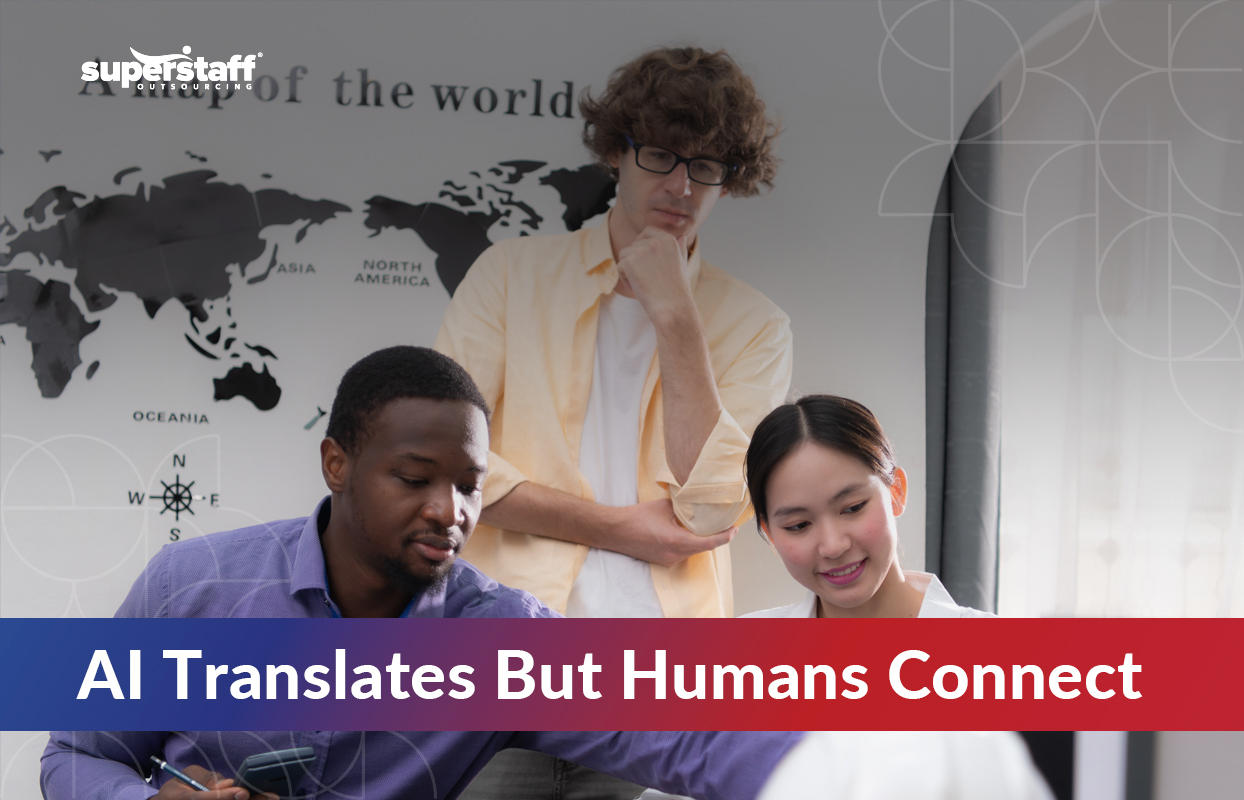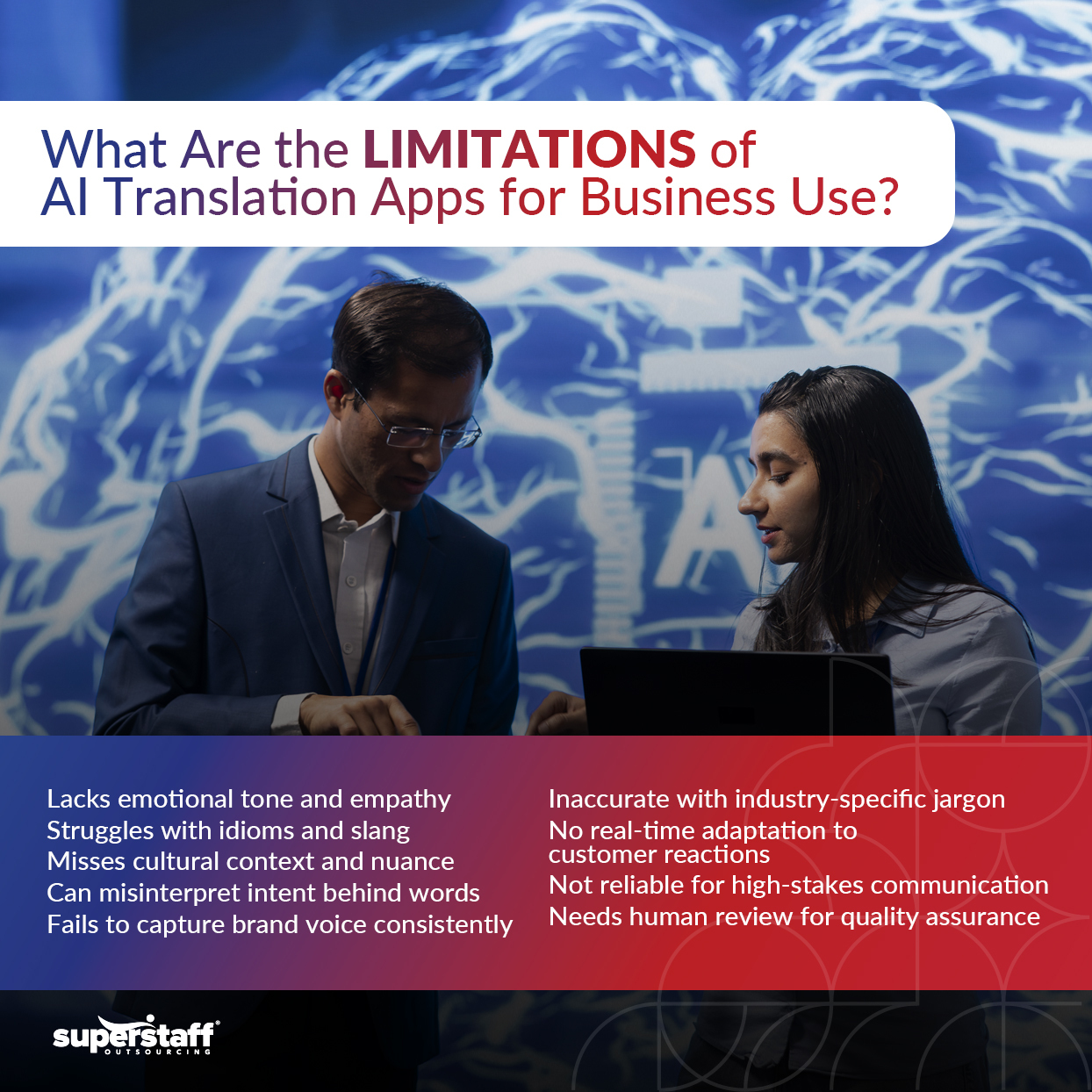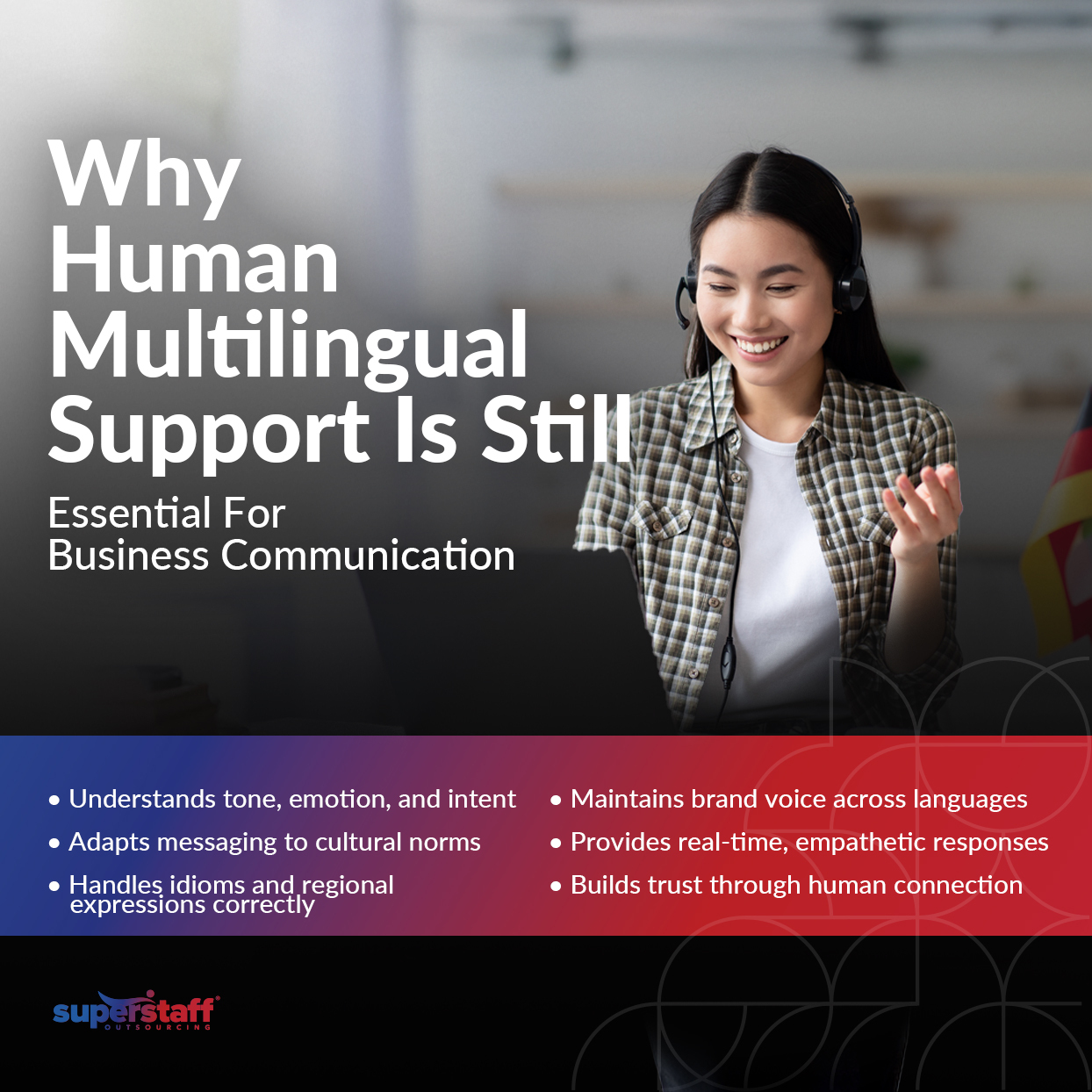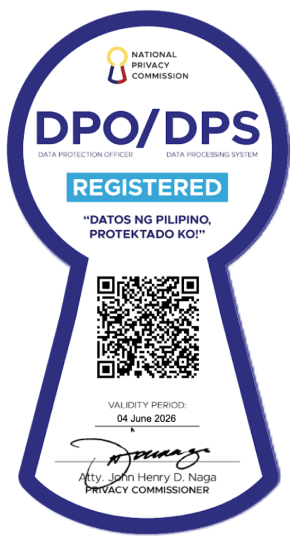
In a globalized market, clear communication is everything. One wrong word—or worse, a mistranslation—can cost you more than a sale. It can damage trust, hurt your brand, and drive loyal customers away. While AI language translation apps promise instant solutions to language barriers, businesses can’t afford to rely on speed alone.
Yes, these tools are faster and more accessible than ever. But in business communications, speed without context can be risky. A poorly translated phrase can confuse, offend, or alienate customers, especially in sensitive interactions like customer support, contracts, or healthcare queries.
This blog explores the limitations of AI language translation tools in professional settings and highlights why human multilingual support is still essential. It will reveal the common gaps in machine-generated translations, their risks in global business interactions, and how human teams provide the nuance, empathy, and brand consistency that AI alone cannot replicate.
The Rise of AI Translation Apps
Artificial intelligence (AI) translation tools like Google Translate, DeepL, and Microsoft Translator have transformed how people overcome language barriers. By using advanced machine learning and neural networks, these apps provide near-instant translations for dozens—even hundreds—of languages and dialects. Their ease of use and accessibility have made them popular for everyday needs, such as casual conversations, global travel, and quick translations in online forums and chats.

Powered by Neural Networks
At the heart of these tools is a technology called neural machine translation (NMT). This method mimics how the human brain works by analyzing entire sentences for meaning rather than translating word by word. As a result, AI language translation tools are far more accurate today than their early rule-based predecessors. They also continue to improve as more users feed data into the system, helping the algorithms learn and refine over time.
A Valuable Tool—But Not for Every Situation
While these apps offer impressive capabilities, their limitations become more apparent in professional contexts. Many businesses now ask, “How accurate are AI translation apps for business communication?” And the answer reveals important gaps. Business communications demand more than just literal translation. They require cultural sensitivity, industry-specific terminology, tone, and emotional nuance to ensure the message is clear and appropriate.
For instance, a machine-translated response in customer service might come across as cold, robotic, or dismissive. In legal or healthcare interactions, mistranslation can lead to regulatory violations or life-impacting misunderstandings. In marketing, missing subtle cultural cues or misinterpreting idioms can weaken the message and alienate the audience.
When Speed Compromises Quality
In the fast-paced world of global business, it’s tempting to prioritize speed. But speed without context is risky. AI may be able to churn out translations in seconds, but it lacks the ability to fully understand your brand voice, customer sentiment, or regional sensitivities. That’s where human multilingual support becomes not just beneficial but essential.
Human Translators vs. AI Tools: Where AI Language Translation Falls Short in Business Communication

According to a Forbes report, businesses are increasingly turning to AI-powered translation tools to scale their global marketing and customer experience efforts. However, 99% of companies still involve human reviewers to refine AI-generated translations, ensuring contextual appropriateness and brand voice consistency.
AI translation apps are designed for speed, not depth. While they may generate grammatically correct sentences, they often miss the bigger picture—intent. Business communication isn’t just about translating words; it’s about conveying meaning. AI tools deliver literal translations that ignore context, leading to confusing or even misleading messages. This is especially risky in high-stakes situations like contract negotiations, customer complaints, or compliance disclosures.
Misinterpreting Idioms and Regional Language
Idioms, slang, and regional expressions often stump AI. For example, a phrase like “let’s touch base” might be translated literally into another language, leaving the recipient puzzled. These tools don’t always recognize how specific phrases shift in meaning depending on culture, geography, or industry. This can lead to embarrassing or, worse, offensive translations that hurt professional relationships.
Missing the Emotional Tone
Tone matters in business. If the AI language translation app fails to pick up on emotional cues, a message intended to be empathetic or reassuring can come across as cold or abrupt. This is especially critical in customer service, healthcare, and HR-related communication, where a lack of empathy can lead to poor experiences and customer churn.
Lack of Industry-Specific Terminology
AI tools often falter when dealing with technical or industry-specific language. Whether medical jargon, legal terminology, or financial reports, automated translations may default to generic words that dilute or distort the intended meaning. This not only reduces clarity but can also undermine credibility with professional audiences.
Cultural Blind Spots
Culture influences communication—what’s appropriate in one country may be offensive in another. AI translation tools lack the cultural awareness needed to navigate these nuances. They can’t adapt messages for cultural expectations, etiquette, or humor, which can result in messages that feel tone-deaf or disrespectful.
Why the Human Touch Matters
This is where trained multilingual professionals make all the difference. Human customer service teams understand not just the language but the context, tone, and culture behind each message. They bring emotional intelligence, brand alignment, and industry expertise to every interaction—qualities no AI tool can consistently replicate. In business, where clarity and connection matter most, the human touch remains irreplaceable.
Beyond Translation: The Human Advantage in Multilingual Communication
Human multilingual support agents don’t just convert words from one language to another—they interpret context, emotion, and purpose. They understand that saying the right thing isn’t always about literal accuracy but aligning with the customer’s expectations, needs, and cultural background. Whether calming a frustrated customer or explaining a complex service issue, they can shift tone and language to convey the right message at the right time.
Nuanced Understanding of Language and Tone
Unlike AI tools that often rely on rigid algorithms, human agents recognize subtle cues in language—sarcasm, humor, urgency, or frustration. They understand how a single word choice can change the tone of a message and adjust their responses accordingly. This level of nuance is critical when providing customer support in multiple languages, where tone, clarity, and cultural sensitivity can make the difference between conflict and resolution.
Mirroring Brand Voice Across Languages
Consistency is key to maintaining a strong brand identity. Human agents are trained to reflect your brand’s tone, personality, and values—whether that’s friendly and casual or formal and professional. They can adapt messaging to different cultural norms without compromising your brand voice, something automated tools cannot do reliably.
Real-Time Adaptation to Customer Reactions
Human multilingual teams bring one primary advantage machines can’t: real-time judgment. They can adjust on the fly based on customer responses, emotional tone, or the issue’s complexity. Whether de-escalating a tense conversation or catching a miscommunication before it becomes a complaint, humans can respond with agility and empathy.
Trust and Clarity Start With People
In customer-facing roles, where relationships and reputations are at stake, the human touch is not just a nice-to-have—it’s essential. Customers trust companies that listen, understand, and respond with care. Trained multilingual professionals make that possible by delivering messages and meaningful interactions that build trust and loyalty.
When AI Language Translation Falls Short, SuperStaff Delivers
Ready to deliver exceptional customer support in multiple languages? Partner with SuperStaff to bridge language gaps with confidence and care. Our highly trained multilingual professionals bring cultural awareness, emotional intelligence, and real-time problem-solving to every interaction, ensuring your global customers feel heard, understood, and valued.
Let SuperStaff help you communicate clearly, build trust, and grow your business across borders. Connect with us today to learn how we can tailor a multilingual support solution to your unique needs.






